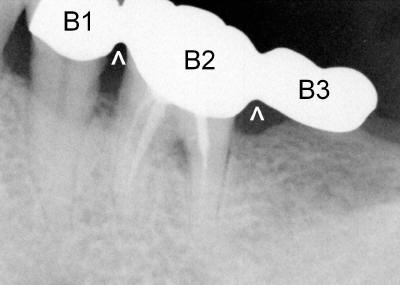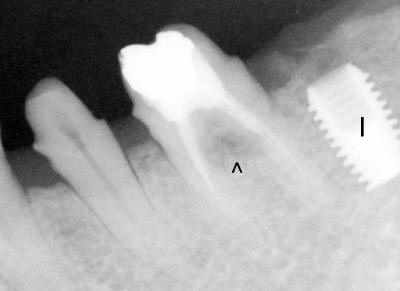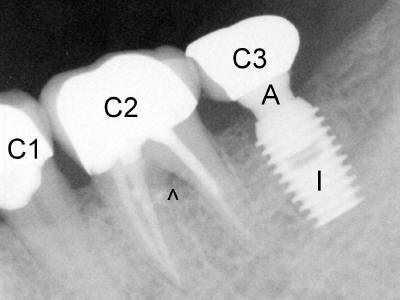


 |
 |
| Fig.1 | Fig.2 |
|
|
 |
| Fig.3 | Fig.4 |
Dental Education Lecture: From Bridge to Implant
Traditional way to fix a few missing teeth is to make bridge(s). There are three parts (units) of a bridge when we lose one tooth (Fig. 1: B1,2,3). The biggest disadvantage of bridge is that the parts are joined together (Fig.1 arrowheads) so that we cannot floss regularly. There is increased chance of developing gum disease (abscess) and cavity between teeth. When the missing tooth is on one side of bridge as Fig.1, we call it cantilever bridge.
Mrs. Lee does not like her cantilever bridge (Fig.1) and wants to change to implant. First, the bridge is removed and an implant (I) is placed in the missing tooth area (Fig.2). There is an infection (arrowhead in Fig.2) in the root area of the middle tooth. Root canal needs to be done again.
After root canal is re-done (arrowhead in Fig.3) by Dr. Bilal Khan (an endodontist), two crowns (C1,2) are placed. These two new crowns are intimately contacted each other, but separate as normal.
About three months later, an abutment (A, Fig.3) is inserted into the implant (I). The third crown (C3) is seated over the abutment. Now there are three separate crowns. Mrs. Lee loves to floss this area. Local oral hygiene is excellent. The infection in the middle tooth is healing (arrowhead). She is planning to change another (Class I) bridge to implant next.
Xin Wei, DDS, PhD, MS 1st edition 04/19/2010, last revision 09/28/2012